As summer approaches, many of us get into the mood for home-grilled food and family parties. If your home has a natural gas line, getting a natural gas grill will help you save costs and never run out of fuel mid-cook. But before you start using natural gas, you’ll need to connect it to your grill.
This article provides a quick rundown of steps for connecting natural gas lines to grills, but you’ll need to take maximum precautions for safety because working with gas lines is dangerous.
What You Need
For a DIY connection, you will require the following equipment to connect your grill to a natural gas line
-
- Pipe-joint sealant
-
- Galvanized steel straps
-
- Drill and drill bits
-
- Gas shutoff valves
-
- Hose
-
- Spray water bottle
-
- Dish soap
-
- Quick-connect shoe fittings
-
- Rust-resistant spray paint
-
- Piper wrench
-
- Pressure gauge
How to Connect Natural Gas Line to Grill
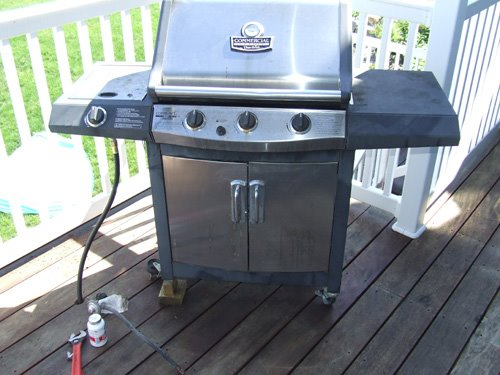
Image Credits: Ing2019.com
Step 1: Ensure You have a Gas Line Extension to the Outdoor Cooking Area
A small kitchen is an outdoor improvement idea that adds value to your home. For outdoor grilling, the first thing in the natural gas-to-grill connection process is to ensure you have a line routed to the outdoor cooking area. If not, you’ll need a professional for gas line extensions and permanent coupling in your outdoor grilling area.
Step 2: Check the Natural Gas System’s Capacity
You need to check and confirm if your home’s natural gas system has adequate capacity to support a barbecue grill. Most home natural gas systems are capable of supporting a grill.
Step 3: Turn Off the Main Gas Line Valve
Now, you can start connecting your grill to the natural gas line. But for safety reasons, ensure you turn off the natural gas main valve at the gas meter. Using a pipe wrench will help to open and close this valve easily.
Step 4: Install the Hose
In this step, you’ll need a free gas coupling on an outdoor wall to connect your grill. If you already have the coupling installed in step 1, this is where you get to use it. So, close the coupling and connect one end of your hose to your gas grill.
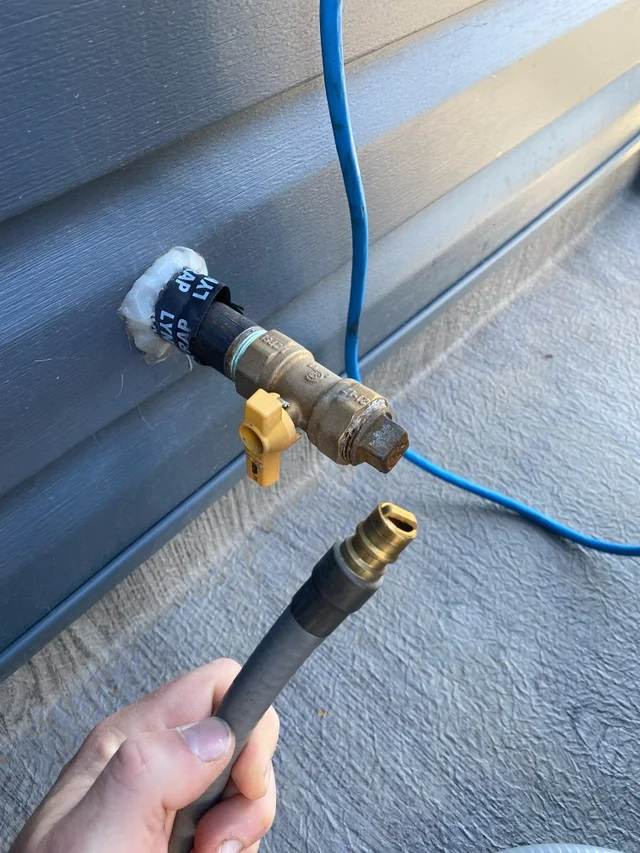
Image Credits: reddit.com
Natural gas grills usually come with a hose about 10 feet long to connect to the gas line. However, connecting multiple hoses for extension might affect your grill’s performance. So, if you need a lengthier hose, over 10 feet, consider hard-piping your natural gas line to the grill.
If you don’t have an outdoor gas line extension, follow these steps to connect
-
- Tap into your home’s gas line and run a new line to your gas grill location.
-
- Apply pipe-joint compound to each connection and tighten with a pipe wrench.
-
- Suspend the new gas line from the floor joists with the galvanized steel pipe hangers.
-
- Install a gas shutoff valve into your new gas line.
-
- Drill a hole through the house wall to continue the new gas line to the outside
-
- Install a shutoff valve outside the house.
-
- Connect a quick-connect hose fitting at the end of the new gas line and another at the gas grill. Then, a gas hose is connected to the quick-connect fittings at the end of the gas grill and the gas line.
Step 5: Inspect the Connection for Leaks
Checking your new connection for possible leaks is a crucial step before you begin using the gas grill. The easiest way to inspect for leaks is to apply soapy water to all the connectors and adapters between your grill and the coupling or gas line.
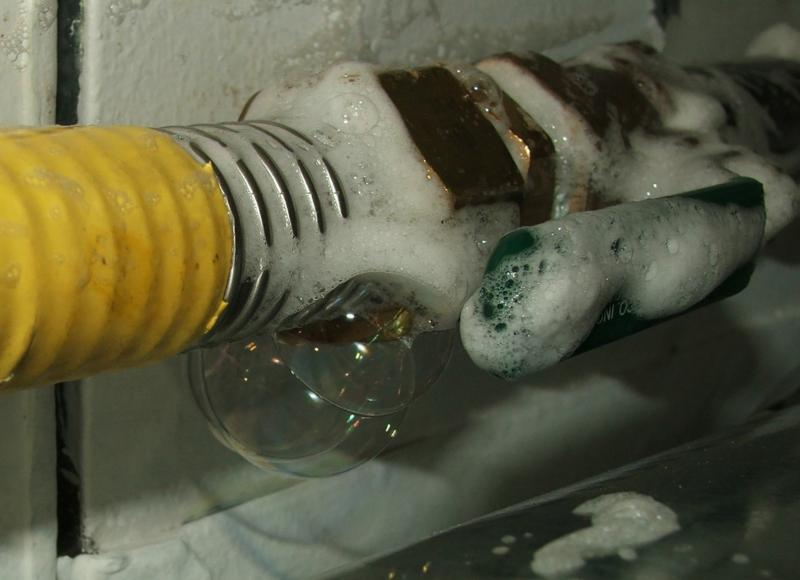
Image Credits: homeleakdetection.com.au
Switch on the gas at the gas meter and coupling, and look out for bubbles forming around the connectors and adapters. If you see even a single bubble, there’s a leak, which can be a safety hazard. Replace the hose or tighten the connectors immediately. You can also call your local gas technician to fix the issue.
Otherwise, your system is safe and ready for use without bubbles.
Alternatively, connect the pressure gauge to the gas pipe, apply the soapy water to the connectors, and let it sit for 30-40 minutes. Then, check the pressure gauge to ensure the pressure hasn’t dropped. If the pressure drops, there is a leak, and you should tighten the connectors or call an expert to fix it.
Step 6: Rustproof the Gas Pipe
The outdoor metal pipe you install on your wall is exposed to all elements, including water and moisture. With time, the pipes will rust, become corroded, or weaken, and might become a danger to your home.
You can prevent this by spraying the outdoor gas pipes with rustproof paint. Before spraying, use cardboard to mask off the house around the gas line.
Step 7: Turn on the Gas Grill
Turn on the main valve at the gas meter and start grilling your favorite recipe on your flattop grill.
How to Connect a Natural Gas Line to a Propane Gas Grill
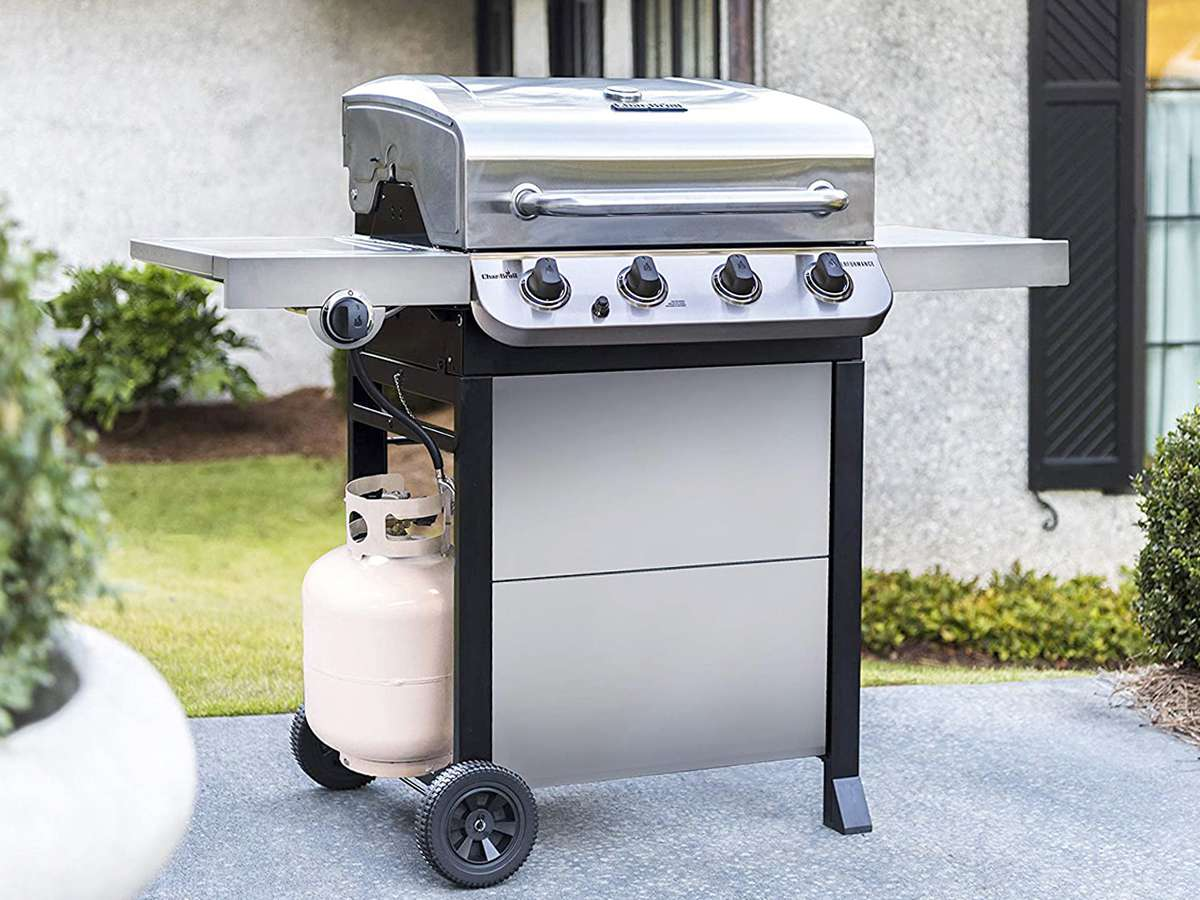
Image Credits: southernliving.com
If you have a propane gas grill instead of a natural gas-rated grill, you might wonder if you can safely connect it to a natural gas line. Hooking a propane gas grill to a natural gas line is possible, but you need to convert the grill for natural gas use.
Follow these steps to connect your propane gas grill to the natural gas line
Step 1: Study Your Propane Gas Grill
Before you attempt to convert your propane grill, carefully study the user manual to ensure it is designed with dual fuel capabilities.
Step 2: Install the Conversion Kit
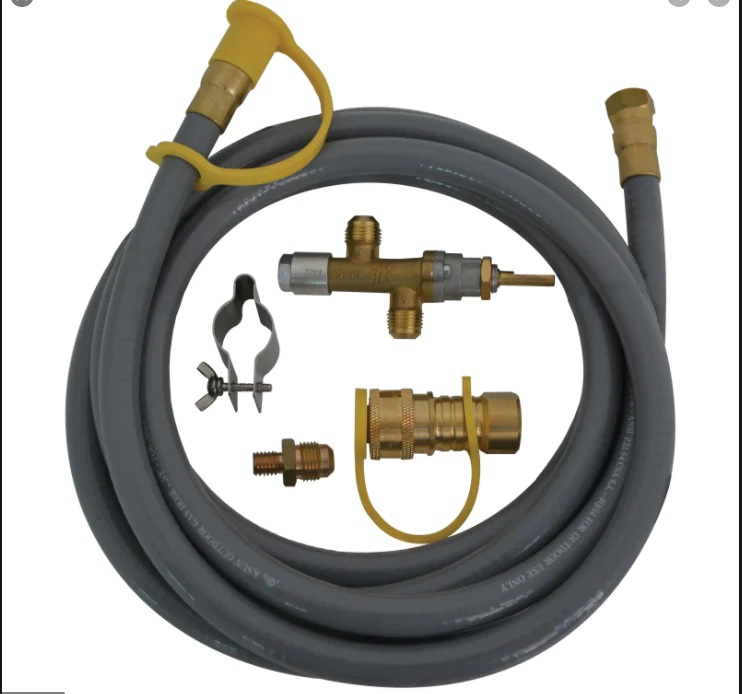
Image Credits: shedsnetwork.com
If your propane grill is compatible with natural gas, get an adapter to convert it into a natural gas grill. You can refer to your grill’s rating label to determine the type of conversion kit you need. Switch off the natural gas line at the main valve and disconnect the propane canister. Then, follow the kit manual to convert your propane gas grill to a natural gas grill.
Advantages of Connecting Natural Gas Line to Grill
1. Cost-Effective
Natural gas is a more economical choice in the long run. It might cost more to set up, but when you start using the grill, the fuel cost is much less than when you use propane gas. In addition, natural gas prices are lower than propane, making it an ideal choice for any homeowner.
2. Portable
If you have the right cord to connect your grill to the natural gas line, you can install your gas grill anywhere outdoors.
3. Safety
Natural gas is less dense than air, dissipating more quickly when released into the atmosphere than propane gas. Therefore, it is less likely to cause a fire hazard.
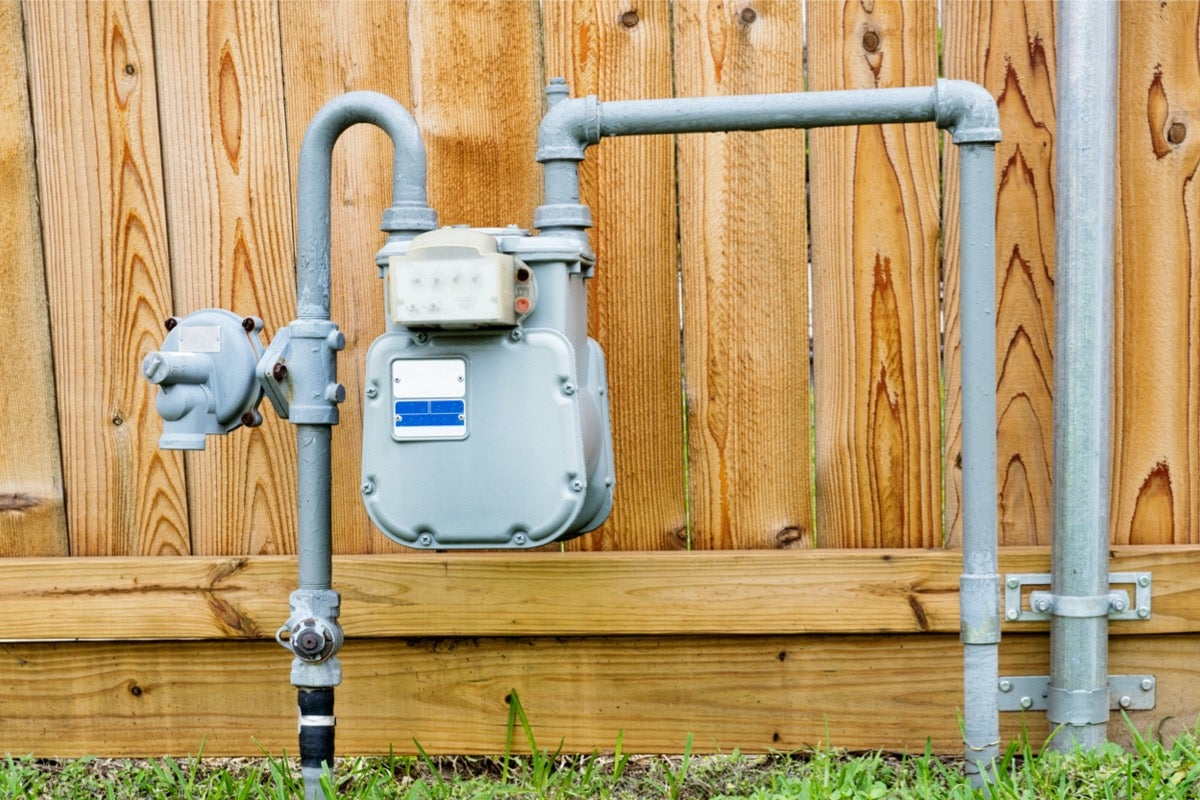
Image Credits: bobvila.com
Propane gas tanks also need to be at a specific temperature. Otherwise, they might burst, making propane a risky choice, especially for outdoor grills.
4. Convenience
Natural gas is convenient in every way. You don’t need to move bulky tanks around to refill them every few weeks or months. Natural gas also doesn’t require specific storage guidelines because it’s fixed at a spot.
Natural gas grills are connected to the main gas line, so they act exactly like ovens or stoves. They are always one click away from heating up.
Frequently Asked Questions
i) Does a natural gas grill need a regulator?
A natural gas grill requires a regulator to handle the gas pressure entering it. Natural gas grills need a pressure rating of 7″ WC (inches per water column), so the regulator’s job is to maintain the pressure at that level.
Unlike other appliances that require a change in pressure level, natural gas grills’ pressure should be steady. When you run the natural gas to a grill, regulators can sense if the pressure in the gas line drops below the rating point and opens to allow more gas to flow. Regulators also decrease the pressure to ensure your gas flow is intact.
ii) Can I connect a propane grill to a natural gas line?
Yes, you can connect a propane grill to your natural gas line. However, convert it to natural gas before doing so. Some gas grills have a built-in adapter that smoothly transitions from one fuel type to another. If yours doesn’t have one, you’ll need to purchase an extra adapter for the job. You can also hire an expert to do it for you.
ii) How long should the hose be?
You should not use a hose above 20 feet as this may reduce the pressure, making your grill not heat properly, and you don’t want that when grilling.
Bottom Line
Connecting a natural gas line to your grill can be a simple DIY step, as seen in this guide. Follow these steps to get it done and start grilling without worrying about running out of fuel midway. If you own a propane gas grill that can work with a natural gas line, you can hook it up with the help of the conversion kit and enjoy the benefits of natural gas.
Featured Image Credits: boatbasincafe.com













